Varieties and cultivation of livistons
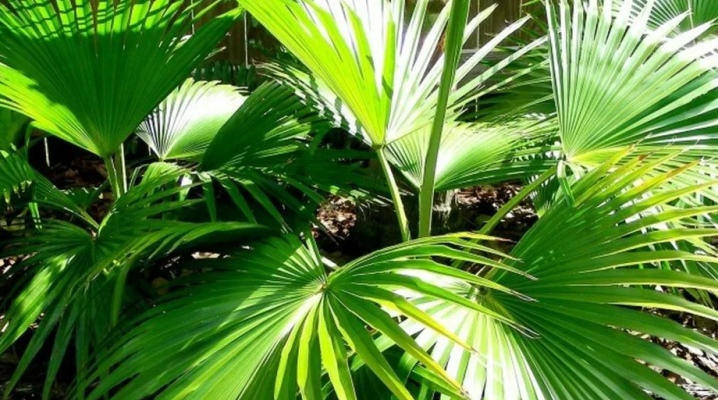
Livistona is a perennial plant belonging to the palm family. It grows in the eastern parts of Australia, southern China, as well as in New Guinea and Polynesia. One of the most suitable conditions for the survival of a culture is high humidity. The most common places where you can find wild Liviston are tropical rainforests, marshlands, areas near lakes and in fields.
Such a culture is very unpretentious to care for and is capable of reaching quite large sizes over a long period of time. Some types of this plant can be planted at home.
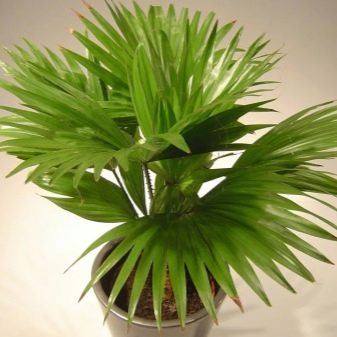
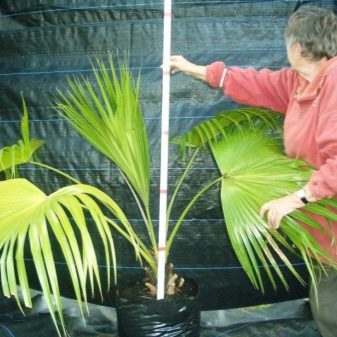
general description
Most of the crop species is represented by palms reaching a height of 20-40 meters and having characteristic fan-shaped leaves. The slow growth of the trunk of the palm tree allows you to grow it at home with the comfort of the plant itself.
The surface of the trunk is covered with fallen off portions of the bases of the petioles. The top of the palm tree is a wide crown with fan-shaped rounded leaves. The dissection on the leaf blades reaches the center of the leaf, and then they have radial folding. Powerful and strong leaf stalks continue in the leaf plate in the form of a clear rod up to 5 to 20 cm long. Axillary inflorescences consist of beige or yellow flowers.
When growing a plant at home, you can find that the trunk of a palm tree is never fully formed, however, leaf plates appear in large numbers: within one year - up to 3 germinated leaves.
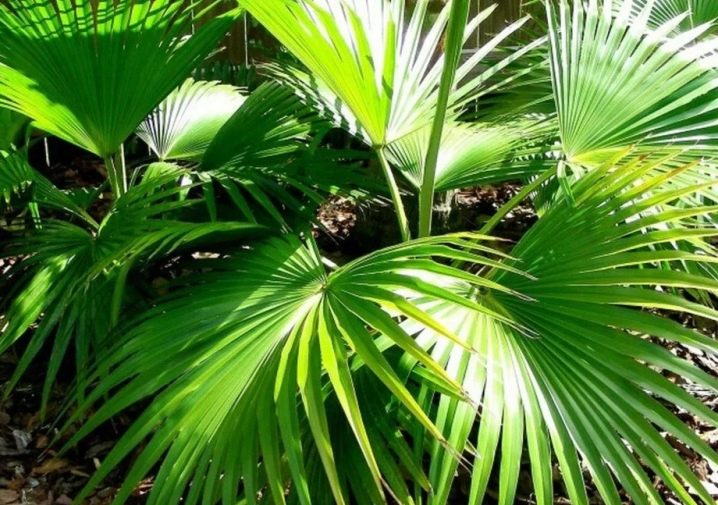
Views
The total number of Livistona species includes about 36 different varieties. Some representatives of the plant from the palm family deserve the most attention.
Chinese
Livistona chinensis is so named because it first appeared in the south of China. Another name is Jade.
In height, the palm tree grows up to 12 m, and the diameter of the trunks can be 40-50 cm.
Areas near the roots have a jagged surface. Elongated large petioles of Livistons form fan-shaped leaves, the ends of which have noticeable notches. There are several dozen segmental divisions on the plate of one such sheet.
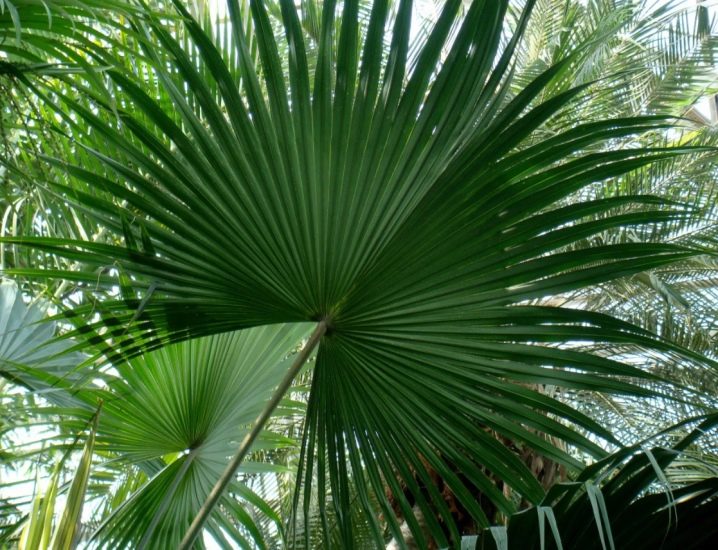
Round-leaved
A variety of Livistona with characteristic rounded leaves is called Livistona rotundifolia, or rotundifolia. This variety is very popular among flower growers, since it takes root well in indoor conditions.
In a natural environment, the trunk of a plant can be 17 cm in diameter. The maximum possible height is 14 m.
The blades of rounded, fan-shaped leaves have a rich herbal color. The cross-sectional diameter of the leaf is 150 cm. The dissection of the plates on the leaves is partial, occupying two-thirds of the length of the leaf. The blossoming of the palm tree brings axillary inflorescences with pleasant yellow flowers.
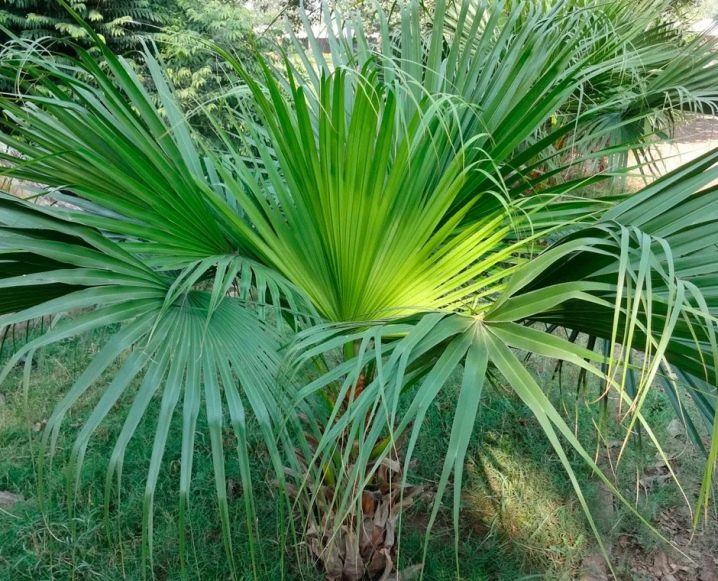
South
Livistona southern, or Livistona australis, grows in the subtropical humid conditions of eastern Australia. The height limit of this variety is 30 m with a trunk diameter of up to 40 cm. The root zone is very wide, and the trunk has characteristic incisions, as well as areas where the bases of the detached petioles are visible.
The leaves of the southern liviston have a rounded fan-shaped shape. The outer side of the leaf is dark green, the back is glossy green. Two-meter petioles are medium in thickness, have a small number of pointed spines. The inflorescences are axillary, in size they can reach 130 cm.
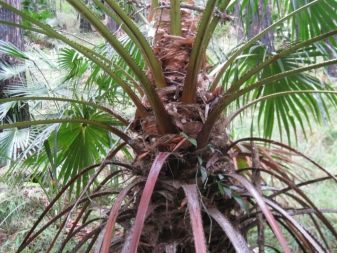
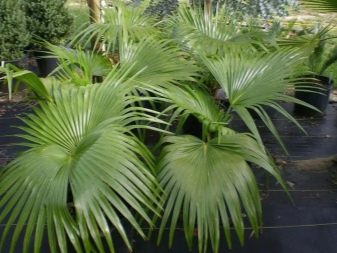
Deceiving
Livistona decipiens is a slow-growing species of Livistona. The height of the culture usually reaches 12 m. It has one massive main trunk with a diameter of 25 cm, the base of which is covered with the remains of fallen petioles.
The crown of the deceptive palm tree is large and massive due to fan-like, downward-leaning leaves with many veins along the blade. The characteristic color of the leaves of the deceptive Livistona is distinguished by an interesting appearance: the front side has a noble green color with a slight gloss, the rear of the leaf has a more gray waxy tint.

Livistona Maria
Another type of culture that deserves attention is Livistona mariae. The wide and massive trunk, covered with withered petioles, reaches a height of 30 m. Its color is a mixture of gray and dark brown. The length of the petiole is 2 meters, at their ends there are fan-shaped leaves with a pronounced dissection. The leaves are strongly bent downward.
The leaf blades change their color over time. Unripe leaves have a specious pink-red color. As the Liviston palm grows and develops, the leaves on it become bronze-red. In a mature tree, the leaves begin to acquire a rich shade of green with a slight tint of blue.
The flowers of the culture resemble panicles in shape, and in color they can have a pale beige or dull yellow tint. Livistona Maria can produce small fruits with a diameter of up to 2 cm, round in shape.
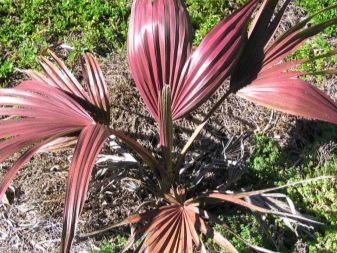
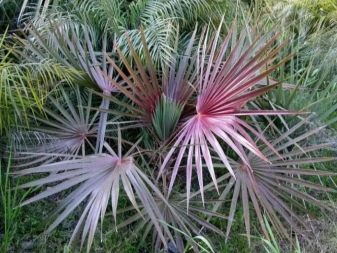
Landing
It is produced using the seeds of a plant or using its shoots.
Seeds
It is best to plant Liviston seed material in the spring: from April to May. So palm trees take root better. The sequence of actions is as follows.
A weak solution of potassium permanganate is diluted, in which it will be necessary to dip the seeds for a short time. And also the solution of "Kornevin" is suitable.
A 1 cm depression is made on a wet substrate and seeds are planted on it.
Seedlings are covered with foil or glass. Keep the seeds in this way until the first sprouts appear.

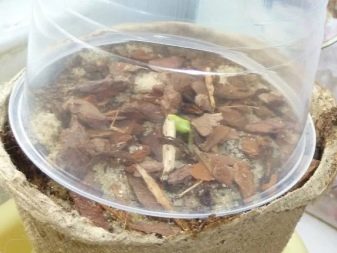
The place for growing a plant must be constantly ventilated. The soil must be sprayed with a small amount of running water. Some enthusiasts advise dipping the seeds in boiling water or crushing them before planting. However, all this is strictly prohibited.
As soon as the seeds begin to germinate, the film is removed from them and transplanted into pots. The soil should be loosened and rich in nutrients. Its acidity should not exceed 7.5.
In various specialized stores, you can buy a mixture of soils for growing Livistons, or prepare it yourself. To do this, you need to mix pine bark with two parts of peat, add one part of charcoal, perlite, bone meal and pebbles. The resulting mixture must be calcined in the oven and cooled.

By shoots
The plant can be propagated using the lateral shoots of a ripe palm tree. To do this, they are carefully removed from the plant and seated separately in another pot.

Care
Taking care of Livistona in your own home is not so difficult if you follow a number of important rules related to watering, feeding and transplanting a plant.
Watering
It is necessary to water the palm tree at home abundantly, but not too much. It is best to water the crop with warm water.
The watering sequence is as follows:
-
in summer - up to twice a day;
-
in winter - up to once every two weeks.
The soil should be slightly damp, but not completely wet. With a large amount of retained moisture, the root system of the plant quickly decays.
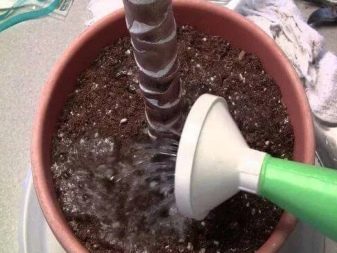
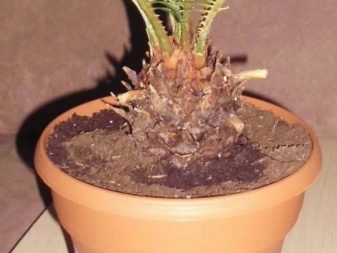
After watering, it is necessary to get rid of the excess liquid that accumulates on the pan of the pot. In winter, plant growth is usually closely monitored when heating is started in homes. It is necessary to monitor the process of plant growth during the first two years of its life.
The air in the room where Liviston is grown must be sufficiently humid. In drier conditions, the palm survives, but its overall appearance suffers.
It is important to periodically spray the palm with water, and wipe the leaves with a soft sponge in order to get rid of dust particles and saturate the leaf plates with oxygen.
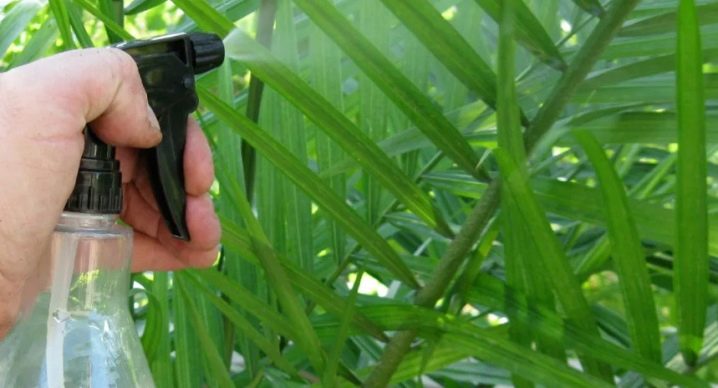
It is allowed to use a special device that humidifies the air, or to make it from improvised items. For example, you can place a dampened towel on a hot radiator. Over time, it will need to be replaced with a new one.
For irrigation, you need to use clean filtered water that does not contain impurities. Running water may seem harsh to the plant, since it contains a large number of salt compounds, as well as various substances that can be harmful to Liviston.
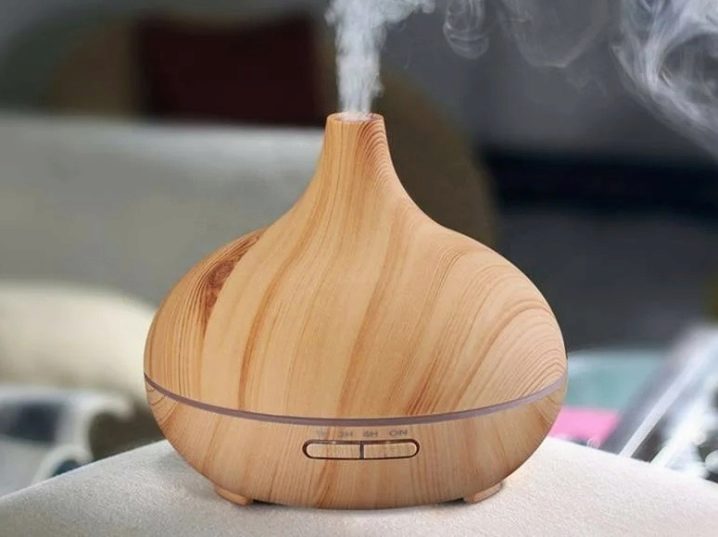
Top dressing
You can feed the plant with special mixtures that are produced for palm trees, or use a complex top dressing. These fertilizers can be found in specialized stores.
It is best to fertilize the soil every 2-3 weeks when the plant is in active development.

Transfer
The houseplant must be transplanted every few years. It is especially necessary to transplant in the spring if the root system begins to bulge out of the drainage. When performing it, a pot is taken, which will be 3-4 cm wider than the previous one.It is important to take into account that a lighter pot will absorb less sunlight.
A drainage layer up to 4-5 cm thick is laid at the bottom of the pot. Instead, you can put pebbles or expanded clay. It is necessary to transplant a palm tree by transshipment of the plant, leaving a lump of earth. To do this, you need to run a garden knife along the edges of the walls of the pot, pull out the plant and check it for damaged or broken root sections. Then they need to be removed with a disinfected knife and placed in a new pot.
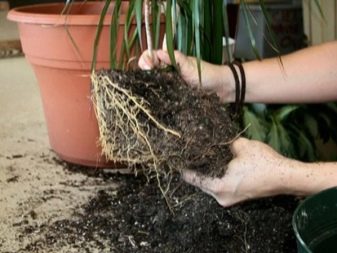
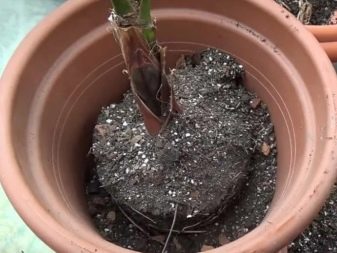
Diseases and pests
Most often, the plant can be affected by fungal diseases. They are manifested by leaf spot, root rot, wilting and sclerotinia.
In the first case, red-brown spots appear on the leaf blades, in some cases they can be completely black. Typically, these spots are surrounded by areas of yellow. As the disease progresses, the spots can merge into one large areas of necrosis. Moreover, such spots cannot appear on those sheets that were not sprayed with liquid.
Therefore, it is best to increase the humidity in the room in this way: place the plant pot on a pallet with damp pebbles.
Of the pests, the greatest damage is caused by:
-
scabbards;
-
spider mites;
-
whitefly;
-
thrips.
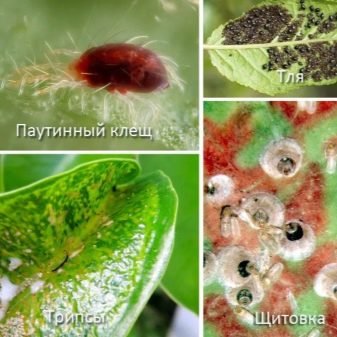
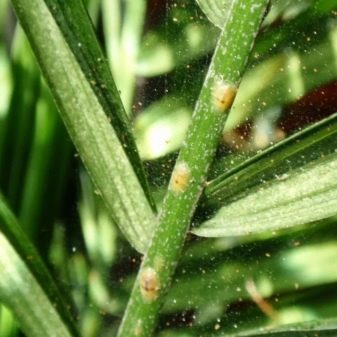
Lack of potassium can cause the leaf plates of the Liviston palm to dry out. First of all, this is manifested by the appearance of orange-yellow spots, which then become large foci of necrotic lesions. After that, the leaves become more curly, turn yellow and dry out completely. You don't need to cut them off right away. In order to save a plant that has dried up, you need to wipe its leaves with a wet sponge. If this manipulation does not give a large effect, then perhaps the cause of such a problem may be too long a palm tree being in direct sunlight. She needs to provide more shade, as well as revise the elements introduced to the top dressing.
Another problem may be the lack of zinc, which will manifest itself as necrotic spots on the leaves of the plant. A lack of nitrogen can cause clouding of leaf plates, impair the growth and development of Liviston. When the liquid stagnates in the substrate, the leaves of the palm tree begin to darken, and rotten areas appear in the root zone.
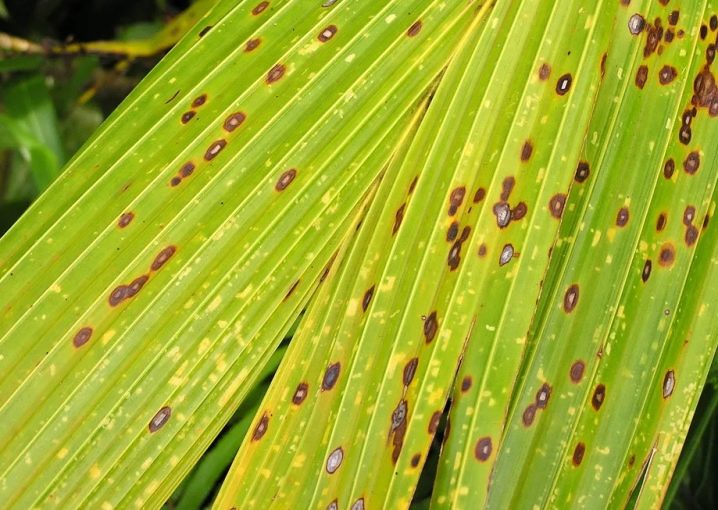
When this ailment is detected, the plant must be immediately taken care of; to prevent it, nutrients can be added to the palm tree feeding.
They capture the leaf plates of plants, sucking out all the liquid from them. To get rid of such a misfortune, you can use insecticidal agents. If worms or scale insects are found on the sheets, then before processing the pests, they must be eliminated with an alcohol-coated cotton swab. Then the plant is taken out into the open space and treated with insecticides. In the case of ticks, it is necessary to use acaricides, because only these pests can be susceptible to them.
At home, Livistona may suffer from inadequate care. With a lack of magnesium in the mixture of soil for the plant, as well as with low illumination of the room and low temperature, the plant develops chlorosis of the leaf blades.
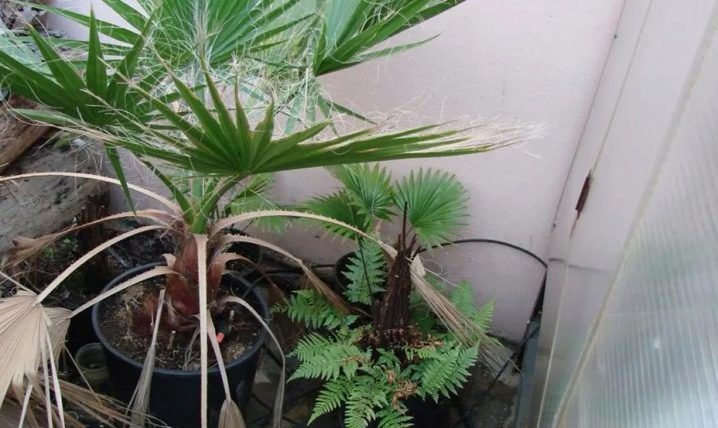













The comment was sent successfully.